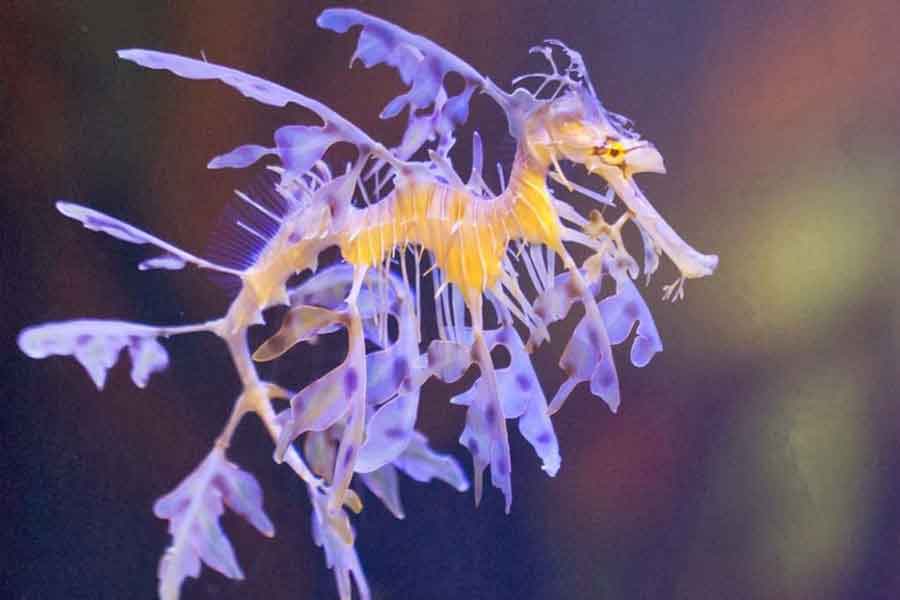
While beauty is not uncommon in the sea, an encounter with a Dragon Seahorse often touches upon the magic of life and biodiversity.
This beautiful inhabitant of Australian reefs, which can reach a maximum length of 45 centimeters, has developed a perfect camouflage, ideal for blending in with the seafloor of marine plants and coral. It also significantly increases its apparent size, making it appear more aggressive to its predators.
It is well-known that among seahorses, it is the male who carries the offspring. For this purpose, it possesses a pouch in its abdomen, similar to the pouch of kangaroos, where the female deposits the eggs that the male fertilizes and carries until they hatch. While they are inside the paternal «brood patch,» some of the offspring may die, leading to the formation of gas due to decomposition. This causes the male to be rapidly pushed to the surface, turning into a balloon. Away from its hiding spot and unable to sink, it would likely be captured by a hungry fish.
Nature has provided the Dragon Seahorse with a solution to this problem. In this species, instead of the characteristic pouch, a naked vascular area develops, without folds or other protection. In its place, there is a spongy matrix known as the «brood patch,» where the eggs can be attached or embedded in small ampoules irrigated by the male’s blood, which carries essential oxygen for the offspring. In the case of any of them dying, the gas produced by it is not retained, saving the father’s life and the rest of the brood. After six weeks, several dozen miniature Dragon Seahorse offspring will be born.
Contrary to appearances, it does not use its «foliage» to move but instead propels itself with the vibrations of its small pectoral and ventral fins. Fortunately, it has not been able to survive for long in aquariums, which keeps it safe from collectors. Thanks to this, it continues to swim freely in the seas of Australia, entwined in the corals, fixing its eyes, always vigilant, on the predators passing by without noticing its mystical presence.
«One cannot defend what one does not love, and one cannot love what one does not know.»

